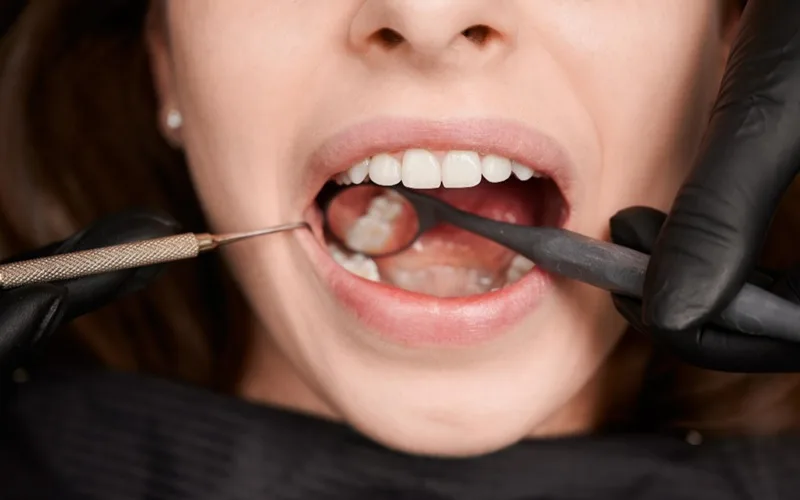What is a Dental Bone Graft? How is It Done?
Dental bone graft procedures have become a cornerstone of modern restorative dentistry, especially for patients who need dental implants but lack sufficient jawbone density. Whether due to tooth loss, periodontal disease, or injury, the bone can deteriorate over time, making implants difficult or impossible without intervention. A dental bone graft rebuilds or regenerates lost bone, creating a stable foundation for future dental work. Understanding how, when, and why this procedure is done is essential for anyone considering advanced dental restoration.
What Is a Dental Bone Graft and When Is It Necessary?
A dental bone graft is a surgical procedure used to restore lost bone in the jaw. It involves placing bone or bone-like material in areas where bone density is inadequate. Over time, this material integrates with the existing bone, promoting new growth and increasing bone volume.
This procedure becomes necessary in several situations. The most common is preparing the jaw for dental implants. Implants require a strong, stable base, and without enough bone, they can’t be properly anchored. Bone grafts are also used to repair bone loss caused by trauma, gum disease, or congenital conditions. Dentists may recommend the procedure after a tooth extraction if significant bone loss is expected in the socket area.
Types of Dental Bone Grafts: Autograft, Allograft, Xenograft, and Alloplast
There are four main types of dental bone grafts, each with its own advantages and use cases:
Autograft
Bone is taken from another part of the patient’s own body, often the chin or hip. This type integrates well and carries no risk of rejection.
Allograft
Donor bone from another human, usually sourced from a bone bank, is used. It avoids a second surgical site but may integrate more slowly.
Xenograft
Bone is taken from an animal source, typically bovine. It provides a scaffold for the patient’s own bone to grow into.
Alloplast
Synthetic materials like calcium phosphate or bioactive glass are used. This is ideal for patients who prefer not to use biological grafts.
Choosing the right type of dental bone graft depends on the patient’s needs, preferences, and the extent of bone loss.
Dental Bone Graft Procedure: Step-by-Step Overview
The dental bone graft procedure usually begins with a comprehensive dental exam, including X-rays or 3D scans to assess bone density and structure. Once a treatment plan is in place, the actual procedure is typically performed under local anesthesia.
- The dentist makes a small incision in the gum to expose the bone.
- The grafting material is placed in the targeted area.
- A membrane may be added to protect the graft and encourage healing.
- The gum is stitched closed over the graft.
The procedure is generally completed in one appointment, though complex cases may require more time. Over the following months, the graft material fuses with the natural bone in a process called osseointegration.
How Long Does It Take to Recover from a Dental Bone Graft?
Recovery time varies depending on the type and extent of the dental bone graft, as well as the patient’s overall health. Most patients experience mild swelling, discomfort, or bruising for a few days after the procedure. Pain is usually manageable with over-the-counter pain relievers or medication prescribed by the dentist.
Initial healing takes about two weeks, but full integration of the graft may take three to six months. During this time, follow-up appointments are crucial to monitor healing and ensure the graft is bonding well. Patients are often advised to avoid strenuous activity and stick to a soft-food diet for at least a week post-surgery.
Dental Bone Graft Cost: What to Expect and Factors That Influence Pricing

The cost of a dental bone graft can range widely based on several factors, including:
-
The type of graft material used
-
The location and complexity of the procedure
-
Whether sedation or additional imaging is required
-
The dentist’s experience and geographic location
On average, a simple bone graft can cost anywhere from $300 to $1,200. More complex grafts involving autogenous bone or multiple sites can cost upwards of $3,000. It’s important to note that dental insurance may partially cover the procedure, particularly if it’s deemed medically necessary for implant placement or trauma repair.
Understanding these costs upfront can help patients plan accordingly and avoid unexpected financial strain while pursuing the best care for their oral health.
Do You Need a Dental Bone Graft Before Getting Implants?
In many cases, a dental bone graft is a prerequisite for successful dental implant placement. Implants rely on a strong and stable jawbone to anchor the titanium post that supports the artificial tooth. If the bone is too thin or soft, the implant may fail to integrate or could become loose over time.
A dental bone graft restores the volume and density of the jawbone to ensure long-term implant success. This is especially common in patients who have had missing teeth for an extended period or who suffer from gum disease or trauma. Without adequate bone structure, implants may not be a viable option, so grafting becomes a critical first step in the restorative process.
Common Risks and Complications of Dental Bone Grafting
While dental bone grafts are considered safe and routine procedures, they do carry some risks, like any surgical intervention. The most common complications include:
-
Infection at the graft site
-
Inflammation or swelling
-
Graft rejection or failure to integrate
-
Nerve damage (rare but possible)
-
Prolonged bleeding or pain
In most cases, these issues are minor and resolve with proper care and medication. Following post-operative instructions closely reduces the chance of complications. Patients with underlying health issues, such as uncontrolled diabetes or compromised immunity, may face higher risks and should be thoroughly evaluated before the procedure.
Dental Bone Graft Healing Timeline: What to Expect Week by Week
Understanding the healing process after a dental bone graft helps patients set realistic expectations and follow the recovery plan diligently. Here’s a general week-by-week overview:
Week 1
Initial healing begins; swelling, bruising, and slight discomfort are normal. Soft foods are recommended.
Weeks 2–4
Pain subsides, and the graft begins to stabilize. Stitches (if not dissolvable) may be removed.
Month 2–3
New bone starts integrating with the graft. Patients should maintain excellent oral hygiene and attend all follow-up appointments.
Month 4–6
Complete osseointegration occurs. At this point, if everything looks good on imaging, the site is ready for implant placement.
Note that the timeline can vary depending on the individual’s healing capacity and the complexity of the graft.
Signs Your Dental Bone Graft Is Failing and What to Do Next
Although rare, dental bone graft failure can occur. Recognizing early warning signs helps prevent more serious complications. Common symptoms of graft failure include:
-
Persistent or worsening pain beyond the expected recovery period
-
Gum tissue pulling away from the graft site
-
Pus, discharge, or signs of infection
-
Loose or shifting graft material
-
A feeling of instability at the site
If you experience any of these issues, contact your dentist or oral surgeon immediately. Early intervention may involve antibiotic treatment, graft revision, or switching to an alternative grafting method. With prompt care, many failed grafts can be corrected before long-term damage occurs.
How to Care for Your Mouth After a Dental Bone Graft

Post-operative care plays a critical role in the success of a dental bone graft. Your dentist will provide specific instructions, but general care recommendations include:
-
Oral hygiene: Use a prescribed antibacterial rinse and avoid brushing the surgical site for the first few days.
-
Diet: Stick to soft foods and avoid chewing on the grafted side. Stay hydrated and avoid hot, spicy, or hard foods.
-
Activity: Avoid intense physical activity for several days to minimize swelling and bleeding.
-
Follow-up visits: Attend all scheduled check-ups so your dentist can monitor healing and address any concerns early.
Pain management typically involves over-the-counter or prescribed medication, and using cold compresses can help reduce swelling. By taking these steps, patients can support their body’s healing process and increase the chances of a successful dental bone graft.
Is a Dental Bone Graft Painful? Managing Discomfort During Recovery
A common concern for patients is whether a dental bone graft is painful. While the procedure itself is performed under local anesthesia (and sometimes sedation), ensuring a pain-free experience during surgery, mild to moderate discomfort can occur during the recovery phase.
Most patients describe the pain as manageable—similar to that experienced after a tooth extraction. Swelling, bruising, and slight throbbing may last for a few days post-surgery. Dentists typically prescribe anti-inflammatory medication or recommend over-the-counter pain relievers to control symptoms. Applying ice packs and maintaining a soft-food diet further helps minimize discomfort. As long as post-operative care is followed properly, recovery after a dental bone graft is usually smooth and uneventful.
Can You Eat Normally After a Dental Bone Graft? Dietary Tips
Immediately after receiving a dental bone graft, dietary adjustments are necessary to protect the graft site and promote healing. Chewing directly on the grafted area can disrupt the bone integration process and increase the risk of complications.
Patients should follow a soft-food diet for at least the first few days. Recommended foods include yogurt, mashed potatoes, scrambled eggs, smoothies, and soups (not too hot). Crunchy, sticky, or spicy foods should be avoided entirely. Staying hydrated is equally important, but patients should avoid drinking through a straw, as suction can interfere with clot formation and disturb the graft.
As healing progresses, your dentist will guide you on when and how to reintroduce regular foods. Following dietary instructions is essential for the long-term success of your dental bone graft.
Dental Bone Graft Success Rates and Long-Term Outcomes
Dental bone grafts have a high success rate, with most procedures integrating successfully into the existing jawbone when performed correctly and followed by proper aftercare. Studies suggest success rates ranging between 80% and 95%, depending on the type of graft, the patient’s overall health, and the experience of the practitioner.
Long-term outcomes are generally excellent. Once fully integrated, the grafted bone becomes indistinguishable from the natural bone and provides a durable foundation for dental implants or other restorations. For patients who maintain good oral hygiene and attend regular dental checkups, a successful dental bone graft can last a lifetime.
It might interest you –> Zirconia Crown
Alternatives to Dental Bone Grafting: When Is It Not Required?
Not every case of tooth loss or jawbone shrinkage requires a dental bone graft. In some scenarios, short implants, zygomatic implants, or angled implant placements can be used to bypass areas with insufficient bone density.
Additionally, newer technologies like platelet-rich fibrin (PRF) or guided tissue regeneration (GTR) may offer enhanced healing without the need for traditional bone grafting in select cases. However, these alternatives are not suitable for everyone and depend heavily on the specific anatomy of the jaw and the location of the missing teeth.
Dentists will assess bone volume using advanced imaging and determine whether grafting is necessary or if alternative approaches can be safely pursued.
For your information –> Hollywood Smile Turkey
Questions to Ask Your Dentist Before a Dental Bone Graft Procedure
Before undergoing a dental bone graft, it’s essential to have a clear understanding of the procedure, recovery, and expectations. Here are some important questions to ask your dentist:
-
What type of graft material will be used and why?
-
How long will the healing process take?
-
What are the risks specific to my case?
-
Will I need additional procedures after the graft?
-
Is this procedure covered by my insurance?
Asking the right questions not only helps ease anxiety but also ensures that you make informed decisions about your oral health. Your dentist should provide detailed explanations and guide you through each stage of the dental bone graft process so you feel confident and prepared.
Click to learn –> Dental implants Turkey

